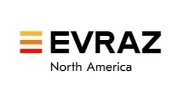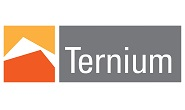Market Segment

Atlas completes Evraz NA deal, renames firm, and hires former USS exec as CEO
Written by Michael Cowden
July 31, 2025
Atlas Holdings has completed its acquisition of Evraz North America (Evraz NA) and its subsidiaries.
The Greenwich, Conn.-based private equity firm said on Thursday that the steelmaker would operate under the name “Orion Steel Companies” going forward.
Atlas also said it had named a former top U.S. Steel executive, Doug Matthews, to be CEO of the company.
Matthews worked at U.S. Steel for 33 years. He replaces Skip Herald, who had served as president and CEO since 2019. Herald will remain on the board of Orion Steel, Atlas said.
What they’re saying
Atlas cheered Matthews decision to join Orion Steel as its top executive.
“He brings a forward-thinking, hands-on approach that helped transform U.S. Steel’s commercial strategy and operations, and he has the deep belief that the heart of this business is the people on the ground, running the mills day in and day out —and he works to empower them to perform at their best,” Atlas Managing Partner Sam Astor said in a statement.
Matthews said he was eager to lead the company, which went through a tumultuous few years following Russia’s full-scale invasion of Ukraine in 2022, subsequent sanctions, and a years’ long sales process.
“As a well-capitalized strategic supplier, Orion Steel is poised to become a central player in the North American market, helping to ensure economic and security interests of the United States and Canada are advanced through significant, local production,” Matthews said.
A brief history and an operations overview
Atlas announced in June that it would acquire Evraz NA. It did not release details of the transaction. But the Wall Street Journal reported that Atlas had paid as much as $500 million for the company.
In the US, Orion Steel operates a plate mill in Portland, Ore., as well as a solar-powered EAF mill in Pueblo, Colo. The Pueblo mill makes seamless oil country tubular goods, wire rod, and coiled rebar as well as rail. Notably, the Pueblo mill is one of the largest rail mills in the US and the world’s largest solar-powered mill.
In Canada, the company is primarily known for its OCTG and line pipe operations in the provinces of Alberta and Saskatchewan. Those facilities primarily serve oil and gas markets in western Canada.
Each mill that is part of Orion Steel will have its own name, Atlas said. The Pueblo mill will operate as “Rocky Mountain Steel Mills.” The Portland plate mill will go by “Oregon Steel Mills.” And the Canadian pipe mills will be named “Interpro Pipe and Steel.”
Those names hark back to the early 2000s, before Swedish steelmaker SSAB as well as Russian steelmakers Evraz and TMK split up the assets of the former IPSCO Inc.
All told, Orion Steel operates two electric-arc furnace facilities, four rolling mills, eight tube mills, and 17 scrap recycling facilities. It has annual steelmaking capacity of 2.3 million tons and finished steel capacity of 3.5 million tons per year.

Michael Cowden
Read more from Michael CowdenLatest in Market Segment

Leibowitz: Is the China truce real or a Band-Aid?
US President Donald Trump and Chinese President Xi Jinping on Thursday had a much-anticipated meeting. Is it only a hiatus in the trade war, or did it really change the situation? I suspect the former, I but hope for the latter.

Nucor targets ‘white hot’ data center boom
With infrastructure demand shifting toward digital capacity, Nucor Corp. is positioning itself as the go-to steel supplier for the data center boom.

Gerdau’s N. American earnings rise in Q3 due to fall in imports
Gerdau’s North American profits rose in the third quarter, boosted by a decline in imports due to Section 232 steel tariffs.

Ternium swings to Q3 loss, eyes 2026 recovery
Ternium closed the third quarter with steady shipments and improving margins. But trade policy uncertainty and subdued demand in Mexico weighed on the Latin American steelmaker’s results.

SMU Mill Order Index fell in September
SMU’s Mill Order Index declined in September after repeated gains from June through August. The shift came as service center shipping rates and inventories fell.
